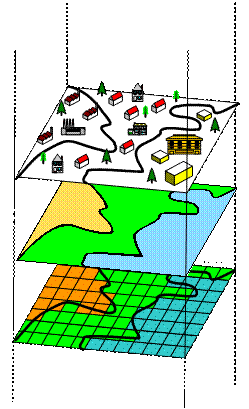

- #Best raster format for qgis how to
- #Best raster format for qgis pro
- #Best raster format for qgis software
- #Best raster format for qgis zip
The GML schema offers metadata for coordinate reference systems, units of measure, and feature descriptors (for primitive objects like points, lines, polygons, and even curves). xml, and as with most XML structures, there is a separate schema file to describe the elements used in the data and the data itself. GML files can have the extension of either. Initially released in 2000, the GML format provided a way to standardize geospatial data being shared online. GML is an Extensible Markup Language ( XML) structure for storing geographic features.

#Best raster format for qgis pro
QGIS - and be sure to create a column for both latitude and longitude ArcGIS Pro - and be sure to create a column for both latitude and longitude Ģ016 NETCARE Amundsen campaign ship_s position data SHIPSPOSN_Amundsen_20160714_R0_NETCARE.ict Geographic Markup Language (GML).ict) have reserved a portion in the top of these files to more thoroughly describe each column of data, offering a self-describing option. Efforts like the ICARTT standard (file extension. Beyond a column header, documentation for these files generally remains separate. It is best to include column names in the top line of these files, though it could be omitted (known as head-less files). These files can be identified by the extension.
#Best raster format for qgis software
These files can be opened in any text editor, spreadsheet software or using programmatic methods.
#Best raster format for qgis zip
Having a field or fields with census tracts, zip codes, or latitude and longitude values allows each record to be spatially aware. Snow persistence grids and snow zone shapefiles for the western United States Comma Separated Values (CSV) and Tab Separated files (TSV)ĬSV or TSV files are plain text with columns of data separated by commas (or tabs) and each line represents a new record. When sharing these data, it is important to package all accompanying files in zip so they remain together. This file format requires field names shorter than 11 characters and file sizes less than 2 GB. Often more than 3 files encompass a single shapefile, all with the same name but different extensions (denoting the different types of information stored in each). shp must be accompanied by at least two other files with extensions. Understanding the response of tropical ascent to warming using an energy balance framework Vector ESRI Shapefileĭeveloped in the early 1990's, the shapefile format is used to store vector data in either points, lines, or polygons. A few organizations using NetCDF include NOAA, NASA and USGS. Like the Hierarchical Data Format (HDF), NetCDF files are self-describing ensuring that documentation accompanies the data when shared. They can be used to store large numeric multi-dimensional datasets with a time-series and spatial component, making them great for computational model outputs. OMI Level 2 O2-O2 Cloud Data Network Common Data Format (NetCDF)ĭeveloped in 1980 for sharing atmospheric science data, the NetCDF file format has gained popularity across many scientific disciplines. HDF5 is the latest version which is much more structured than the previous. These self-describing files can store multi-dimensional data and are useful for storing general-purpose scientific data. h5, these files are comparable to a folder with a root level containing child folders and files within. HDF files are very versatile allowing researchers to store images, tables, graphs, and even documents within one file. CreationĢ016 riparian vegetation within the Colorado River Basin Hierarchical Data Format (HDF) The inclusion of geospatial information as part of TIFF files can be determined using a GIS or programmatically using GDAL.


tiff, and upon first glance look like standard image files. The combination of a Tag Image File Format (TIFF) with geospatial (i.e., location) information produces a GeoTIFF. Network Common Data Format (NetCDF) VectorĬomma Separated Values (CSV) and Tab Separated files (TSV) For a brief explanation of raster and vector data types, please visit Table of contents Raster The file formats have been broken-down based on the types of data they can contain - either raster, vector, or both.
#Best raster format for qgis how to
Links to resources on how to create and open each file format have been included, along with an example file for each format. The following document focuses on these open file formats and provides a brief explanation of each. In an effort to promote the interoperability of geospatial data, a few open standards have emerged. As many of these file formats are proprietary, specific software is required to work with them limiting their reuse. Geographic Information System (GIS) software has been in existence since the 1980's and since then over 80 raster and vector file formats have been created.


 0 kommentar(er)
0 kommentar(er)
